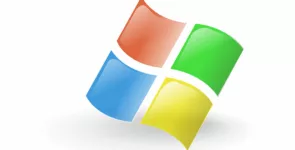Microsoft announced Surface Studio 2, and I think it represents the best effort so far to create the perfect creator’s laptop. It isn’t a cheap date at around $2K for a base configuration that likely won’t meet the needs of many creators, but optioned-up with a professional NVIDIA graphics card, it’s a viable workstation-class PC, even though it lacks the certifications typically required of workstations.
But I’m talking hardware design here. The target competitor is the Apple MacBook Pro which the Surface Studio 2 appears to overcome with advancements that Apple doesn’t seem to want to match. Apple is known for focusing more on preserving margins than building the best tools for the creators that make up much of Apple’s existing installed base.
Don’t get me wrong. Many of my peers believe the MacBook is the best creator tool out there due to its performance and battery life, but I think there is room for improvement and Microsoft is exploring that with Surface Studio 2.
What Does a Creator Need in a Notebook?
Most of the creators I’ve known live on either workstations or gaming rigs that are capable of workstation-performance loads but cost less than a true workstation. Over time, the loading has switched from the CPU to the GPU which means that the perfect creator product not only needs a decent GPU but the option for a professional grade GPU if the creator wants to run advanced applications for animation, editing pictures or specially designing things.
Creators generally like some kind of pen interface. This means a touch screen, but touch screens are difficult to use with a pen unless they lie flat. In addition, creators often need to stand while sketching, which means the laptop should have a tablet form even though it will be used as a more typical laptop for the paperwork that generally comes with most jobs (email, status updates, directions, descriptions etc.).
Most recently, creators need access to AIs, and AIs run best on hardware designed for them. The concept of a NPU (Neural Processing Unit) has been brought forward for that purpose, and this not only helps create AI-driven products and offerings but allows the user access to local generative AI instances so they can speed up their workflow and increase their overall productivity.
MacBook Pro vs. Surface Studio 2
Both products start at around $2K, and both products can be configured with GPUs though the Surface Studio 2 can use one of three GPUs, including a professional grade. The Apple MacBook Pro comes in 14-inch and 16-inch versions, while the Surface Studio 2 only has a 14-inch+ display. Both products have unique displays tied to their platform: Pixel Sense for Studio 2 and the higher resolution retinal display from Apple. And both products weigh in around the 4- to 5-pound range. Both products should have similar battery life. Microsoft’s listed battery life is higher, but Apple has traditionally been more accurate in its representations, so they should be very similar to each other in this regard.
But the Surface Studio 2 has a NPU for generative AI creation and potentially improving the productivity of the user. Microsoft is rolling out its Copilot generative AI feature across Windows and Office 365 next quarter. The Surface Studio 2 has a cantilevered touch screen that allows the user to sketch out their ideas and create finished artwork on the screen, and it has the NPU that Apple’s solution lacks, giving a bit more protection against premature obsolescence than the MacBook Pro has.
Wrapping Up: The Surface Studio 2 Is Better for Creators
This is more about the case design and the inclusion of the NPU than any other factors where the MacBook pro equaled or even exceeded what the Studio 2 offers. But creators often need to be able to draw things, work flat on a table and to present their work. The cantilevered touch screen is far better for this than Apple’s traditional laptop screen, and the NPU in the Surface Studio 2, once the AI technology is available, will allow the Studio 2 to cut down on the amount of work a creator has to do significantly.
I think the overall difference between the products is that Microsoft has targeted creators very tightly with its Studio 2 while the MacBook Pro is more similar to a high performance generic laptop. It performs admirably as a laptop, but it doesn’t embrace what creators need as well as a targeted product does.
Sadly, Microsoft continues to under-market Surface, which means Apple’s MacBook Pro will likely outperform it in the market. But if you are a creator, you might consider the Studio 2 as a better tool for what you do than more generic laptops, including the MacBook Pro.








